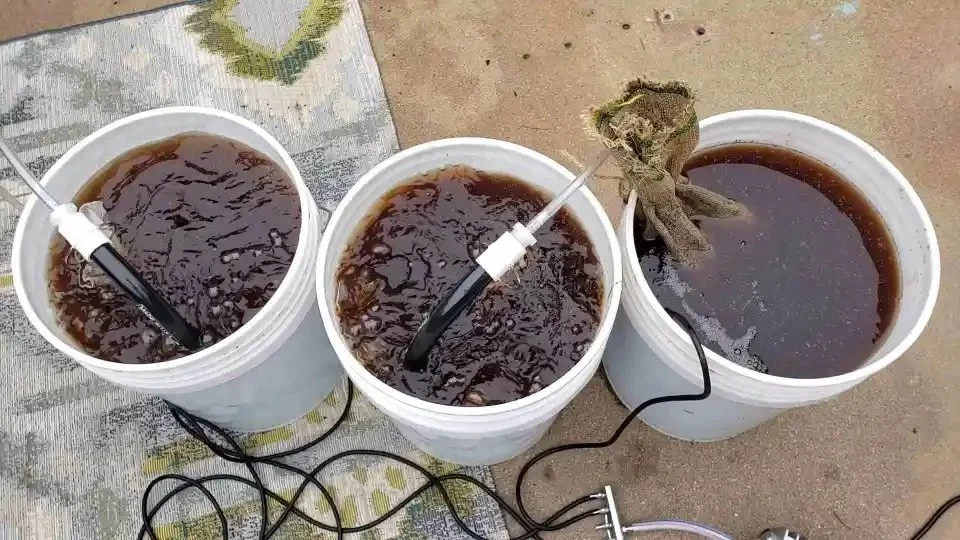Welcome to Mad Science Monday Book Club: Reading, Learning, and Brewing Better Soil
Soil isn't just dirt—it's alive. It's a thriving, complex ecosystem filled with microscopic life that powers plant health, supports biodiversity, and holds the key to sustainable agriculture. At Mad Science Mondays Book Club, let’s dig deeper—literally and intellectually—into what it takes to cultivate vibrant, living soil.
My inspiration comes from a rich collection of foundational texts on soil health, including *Teaming with Microbes*, *The Rodale Book of Composting*, *The Farm as Ecosystem*, and several other transformative books. These works don’t just sit on the shelf—they guide how I think, garden, and grow.
But this isn't just a reading group. I want to turn knowledge into action through hands-on experimentation. My first focus is compost tea, a powerful tool for bringing soil biology to life. As we explore each book, we'll also be brewing, testing, and observing the effects of compost tea on our soils and plants. Together, we’ll learn what it means to feed the soil food web and create ecosystems that regenerate rather than deplete.
Whether you're a farmer, gardener, educator, or just soil-curious, you're invited to read along, get your hands dirty, and grow with us. Follow our journey, join the discussion, and discover how words on a page can transform the ground beneath our feet.
Let’s blog! I’ll be posting weekly on reading and experimenting. I hope you’ll comment and ask questions.
Mad Science Monday Reading List
Brunetti, Jerry. *The Farm as Ecosystem*. Greeley, CO: Acres USA, 2014.
In this comprehensive work, Jerry Brunetti presents the farm as a living, dynamic system, highlighting the interconnections between soil, plants, animals, and humans. The book explores the biological underpinnings of soil health, emphasizing microbial life, nutrient cycling, and the role of biodiversity in sustainable agriculture. Brunetti draws on both scientific research and his extensive practical experience, offering insights into pasture management, composting, and ecological pest control. This book is particularly valuable for its holistic approach to soil health and its advocacy for regenerative agricultural practices. It is a key resource for farmers, agronomists, and environmentalists seeking to understand and improve the ecological function of their farms.
Lowenfels, Jeff, and Wayne Lewis. *Teaming with Microbes: The Organic Gardener’s Guide to the Soil Food Web*. Portland, OR: Timber Press, 2010.
This accessible yet thorough introduction to soil microbiology explains the soil food web and its crucial role in maintaining soil health. Lowenfels and Lewis demystify the complex relationships between bacteria, fungi, nematodes, and other microorganisms, helping readers understand how to cultivate soil teeming with life. The authors provide practical strategies for fostering soil vitality, including compost tea application and no-till gardening. This book is especially useful for gardeners and small-scale farmers interested in harnessing microbial life to boost plant productivity and resilience.
Martin, Grace Gershuny, and Deborah L. Martin, eds. *The Rodale Book of Composting*. Emmaus, PA: Rodale Press, 2018.
This classic guide, first published in the 1970s, has been updated with contemporary techniques and environmental concerns. It covers the science and practice of composting, from backyard bins to larger-scale systems. The book emphasizes the role of compost in enriching soil structure, enhancing microbial activity, and improving moisture retention. It provides step-by-step instructions for creating various compost systems and addresses challenges like pests and odors. Its practical focus makes it a cornerstone resource for anyone working to improve soil fertility naturally.
Appelhof, Rhonda. *The Worm Farmer’s Handbook: Mid- to Large-Scale Vermicomposting for Farms, Businesses, Municipalities, Schools, and Institutions*. White River Junction, VT: Chelsea Green Publishing, 2017.
Focusing on vermicomposting at scale, this guide offers in-depth information for those looking to integrate worm-based composting into larger operations. It details system design, worm biology, feeding regimes, and troubleshooting. The book emphasizes the production of worm castings as a high-quality soil amendment and explores their impact on soil health and plant growth. Appelhof's work is essential for those seeking sustainable waste management solutions and enhanced biological fertility through vermiculture.
Grace, Dawn. *Grow Your Soil!: Harness the Power of the Soil Food Web to Create Your Best Garden Ever*. North Adams, MA: Storey Publishing, 2019.
Written for gardeners, this approachable book translates soil biology into clear, actionable steps. Grace encourages readers to shift from feeding plants to feeding soil, offering techniques such as cover cropping, mulching, composting, and microbial inoculation. With an emphasis on building healthy soil through organic means, the book advocates for a long-term, regenerative approach to land care. It’s particularly useful for beginners and intermediate growers who want to enhance soil quality with minimal disturbance.
Wood, Jesse Frost. *The Living Soil Handbook: The No-Till Grower’s Guide to Ecological Market Gardening*. White River Junction, VT: Chelsea Green Publishing, 2021.
Frost, a farmer and educator, provides a field-tested guide to no-till farming and living soil systems. He focuses on building and maintaining soil fertility without mechanical disturbance, relying instead on cover crops, compost, and biodiversity. The book balances scientific explanations with practical advice and includes real-world examples from Frost’s own farm. This is a vital resource for market gardeners and regenerative farmers seeking to increase yields while enhancing soil biology and structure.
Rundgren, Matt Powers. *Regenerative Soil Microscopy: Seeing Life in the Soil*. Bakersfield, CA: Powers Publishing, 2021.
This visually rich and technically detailed book introduces the reader to soil microscopy as a tool for understanding soil biology. Powers walks readers through microscope setup, slide preparation, and organism identification, making the invisible life of soil accessible. He connects microscopy to broader regenerative agriculture practices, helping growers assess soil health based on biological indicators. It's a valuable manual for advanced practitioners interested in monitoring and optimizing the biological function of their soils.




